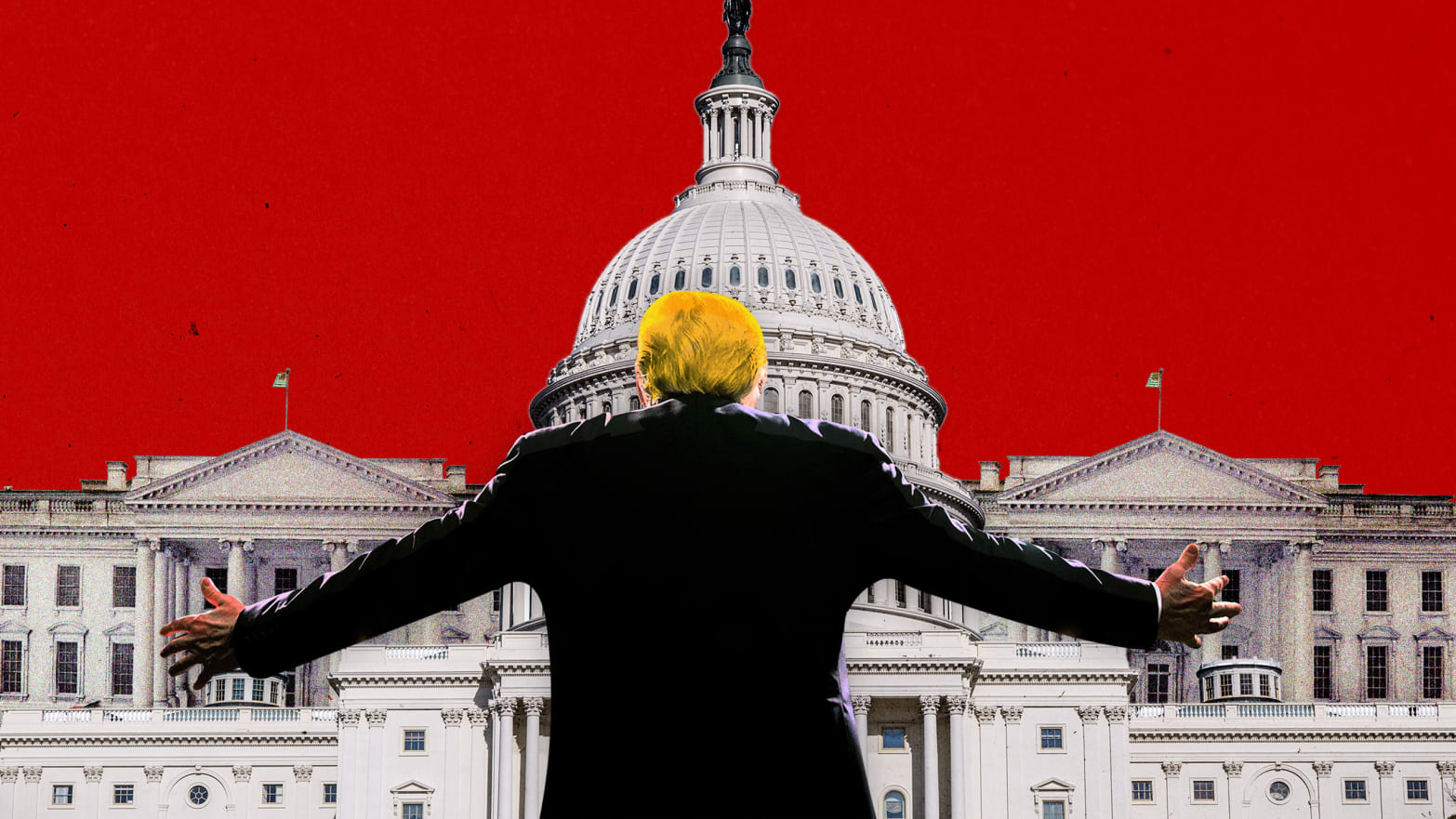Is there a moment when a fanatical leader can be stopped before he takes a nation into the abyss? A moment when those with the moral determination to stop him can act before it is too late?
These questions are not academic. Every day Trump stress tests this republic’s defenses against a demagogue.
History has such moments. They need to be heeded.
In Italy the moment came on Aug. 16, 1924.
For more than two months, one of Benito Mussolini’s most formidable opponents, Giacomo Matteotti, a socialist member of the Italian parliament, had been missing.
Mussolini had been prime minister for 20 months. In April 1924, his power was consolidated by a landslide victory, the fascists winning more than 65 percent of the vote. Given this mandate in a democratically run national election, Mussolini hesitated to take the next step that his followers wanted and expected—to seize absolute, autocratic power.
Then, on that August day, during road works in a Roman suburb, Matteotti’s body, eviscerated by multiple stab wounds, was unearthed in a ditch.
Matteotti wasn’t a leftist rabble-rouser. He was wealthy patrician landowner with progressive views. He saw through the falsity of Mussolini’s pose as a man of the people. Mussolini, he warned, would ride to dictatorship on the backs of the masses who were being conditioned by propaganda to believe their interests were his.
The reason for “disappearing” Matteotti was not hard to see. Before he died he was preparing to release to parliament a dossier exposing a series of crimes, including murder and corruption, carried out by Mussolini’s henchmen since he became prime minister. The dossier never surfaced.
The murder of Matteotti outraged millions of Italians who, until that moment, had been ready to turn a blind eye to fascist thuggery. For a while a 200,000-strong fascist militia had been used to suppress criticism of Mussolini, who in his regular belligerent public speeches had referred to liberty as “a more or less putrid goddess” who needed to be eliminated.
Mussolini recognized that the murder had given his opponents what until that moment they had lacked: a martyr whose death might finally unify the factionalized parliamentary opposition. Foreign newspapers pointed to it as a shocking indication of the fascists’ methods—and of Mussolini’s own ruthlessness.
In fact, historians have concluded that Mussolini did not order Matteotti’s murder and did not know of it when it was carried out. (Matteottti’s wife agreed.) It dismayed him not because it was an outrageous act but because in his eyes it was politically dangerous and a public relations disaster.
How Mussolini navigated his way out of a situation that could potentially have unseated him and the fascists provides a classic text that many other despots followed, beginning with Hitler. The latest is President Recep Erdoğan of Turkey.
In essence it is breathtakingly simple: In order to justify repressive force and powers you have to create a situation for which repressive force and powers appear to be the only remedy.
Mussolini was surrounded by a hard core of sociopaths and one enduring theory about Matteotti’s murder is that they ordered it because they feared that Mussolini, now that he had legitimacy as a democratically elected leader, was flirting with the idea of accepting parliamentary constraints on absolute power.
It was always difficult to know with Mussolini how much his own deep-rooted megalomania was instrumental in his actions at any moment and how much the thugs around him influenced him by playing on his psyche. In this case, he rode out months of protests before making his move, late in 1924.
His main target was Florence. The city had become a hotbed of resistance to the fascists. Posters with pictures of Matteotti and the cry “We do not wish to be thought of as a race of slaves worthy only of being dominated and humiliated by violence and intimidation” appeared all over the city.
At the end of December, a force of 2,000 black-shirted fascist militia rampaged through Florence, smashing up the offices of an opposition newspaper and destroying its presses, hunting down and beating up lawyers and activists.
This provided the pretext for Mussolini to present himself shamelessly as the iron fist required to end the cycles of violence: “Italy wants peace and quiet, work and calm,” he told parliament on Jan. 5, 1925. “I will give these things with love if possible and with force if necessary.”
For a few days the outcome was uncertain. Italy’s fascist future was clearly intimated for everyone to see in starkly moral terms.
Of the institutions that might have stopped Mussolini right then, the monarchy, in the person of the ageing King Victor Emmanuel, (Mussolini called him “physically no more than a half-cartridge”) was ineffectual; the Vatican was fearful of taking sides and strongly averse to the socialists who were seen as godless secularists; the parliamentary opposition, briefly vocal after the death of Matteotti, had reverted to factionalism. Mussolini had already made sure that the newspapers were cowed into blind obedience.
This is not Italy in 1925. Nonetheless there is no comfort to be gained from the gap in place and time. There are too many clear similarities in the Trump administration’s language, techniques and actions.
First, there is the flashpoint issue designed to make populations feel insecure—and therefore, to justify a draconian response.
Trump has used immigration as that issue from the day of his notorious candidacy-launching “rapists and murderers” speech.
And, like Mussolini, Trump is surrounded by his own hard core of fanatics eager to use that issue to achieve their own ideological purposes.
Mussolini was greatly under the influence of Roberto Farinacci, a lawyer and one of the most unrelenting dogmatists of the fascist movement. Trump has Stephen Miller, under the nebulous title of political adviser, who has for years been in lockstep with Attorney General Jeff Sessions in whipping up fears about the browning of America (which is, in any case, already demographically inevitable).
The ultimate ghastly achievement of the Miller-Sessions axis has been the “zero tolerance” policy for those crossing the Mexican border without permission. In other words, the automatic criminalization of refugees.
All along, Miller and Sessions knew that in Trump they had an easy accomplice. The man who created the birthing smear against Obama and who thought the fascists at Charlottesville were OK was innately racist, and they exploited it.
In fact, “zero tolerance” has the same intransigent tone, the same absolutism and the same indiscriminate cruelty that Mussolini conveyed in his speeches when he used the unrest that he had himself fomented to justify seizing absolute power.
And the language used in attacking immigrants is based on lies used with the same frequency and conviction that was recommended by the original fascist dictum that if a lie is repeated often enough it becomes accepted as fact.
Immigration across the Mexican border has been continually presented as a threat to public safety. Thousands of innocents fleeing from terror in Central America are equated with terrorists. The MS-13 gangs become shorthand for a crime wave that doesn’t exist.
And Trump, as ever an empathy amputee, is still using words like “infest” and “invade” as a catch-all term for thousands of people who are refugees and asylum seekers.
Forced into stopping the separation of children from parents—albeit when it had become untenable—Trump pulled a sordid stunt by inviting to the White House a group of people who had lost loved ones to crimes committed by illegal immigrants. This sad and bewildered group found themselves suddenly complicit in sustaining the toxic fiction that nobody is safe when sharing the streets of our cities with illegal immigrants.
Where Mussolini had his militia, Trump has Immigration and Customs Enforcement, ICE. Created in 2003, ICE was a child of the response to 9/11, part of the Bush administration’s plan to reinforce institutions to deal more effectively with terrorism, and it fell under the Department of Homeland Security.
Probably because of the haste of that change—and the priorities given to anti-terrorist powers—ICE has suffered from weak oversight. As a result, it has a long record of abusing detainees through both the Bush and Obama administrations and now in the era of Trump it seems alarmingly unfettered.
Last December the inspector general of the Department of Homeland Security, belatedly responding to disturbing reports about the treatment of immigrants, confirmed widespread cases of the abuse of detainees in ICE jails across the country.
The abuse included strip searches in violation of rules, failure to provide medical care, physical abuse by guards and unsafe and unhygienic conditions. Other reports have indicated systemic sexual harassment and abuse.
Indeed, since the arrival of “Zero tolerance” ICE has shown all the signs of going rogue. It scooped up and bundled off detainees to many parts of the country in the confidence that nobody was looking—until the whole miserable farrago of family separations was suddenly exposed. It remains belligerently opaque in its methods, consistently rebuffing the attempts of lawmakers to inspect its premises.
Not even Mussolini could have imagined concentration camps for babies. But that is where we are.
Trump and the White House are, in theory, constrained by Congress, an independent judiciary, a government staffed by people who are supposed to follow the law and a free press.
Looked at in the context of Mussolini’s Italy, how well are these constraints performing?
The judiciary is yet to be fully tested, but the Supreme Court is looking worryingly complaisant after its blessing of Trump’s Muslim travel ban, shaped indelibly by his splenetic Islamophobia. In contrast, the professionals at the Department of Justice have so far, in spite of Sessions, managed to secure their integrity.
The bureaucracy is far more wobbly. It is already deeply corroded by Trump appointees, most egregiously at the EPA, where Scott Pruitt’s vainglorious excesses and pandering to lobbyists has distressed even some Republicans.
The most obvious failure, though, is Congress. It is, at best, in denial and, at worst, calculatingly supine.
In Mitch McConnell the Senate has a majority leader who has spent years perfecting his impersonation of Uriah Heep, piously lamenting the lack of bipartisan support for any legislation, particularly on immigration, while making sure there is none. He has been typically AWOL during every stage of Trump’s moral depravities.
In the House Paul Ryan, half out the door already, was revealed as spineless long ago and now looks like a beaten man.
At least we still have the free press at the top of its form. But, at the same time, we also have Fox News, serving basically as a state propaganda machine so sycophantic and so malign that Mussolini would have found it exemplary.
Before we descend into hell let’s make sure we recognize the signs of its approach. They are all there now, in plain sight. History does not have to repeat itself.

